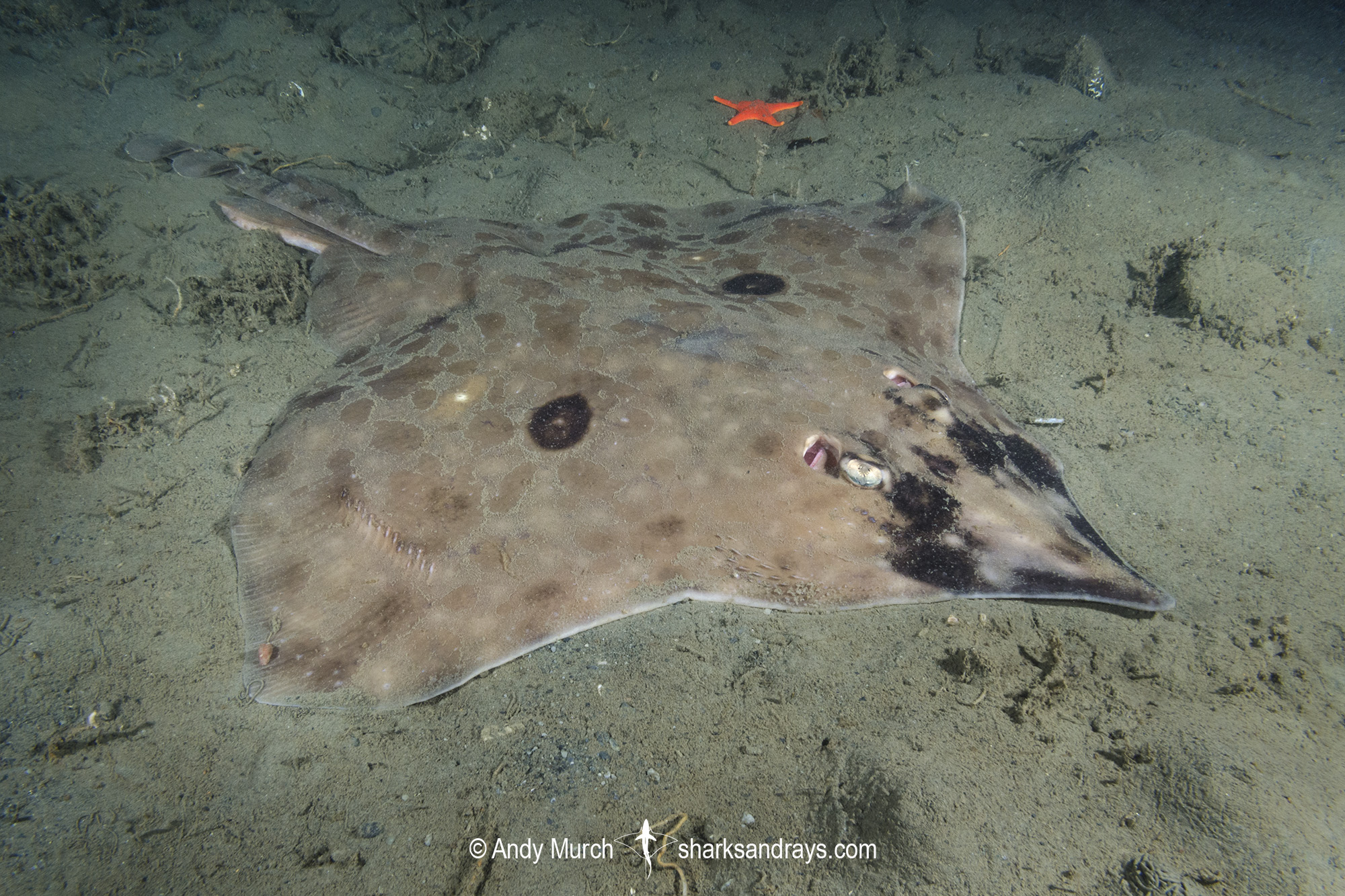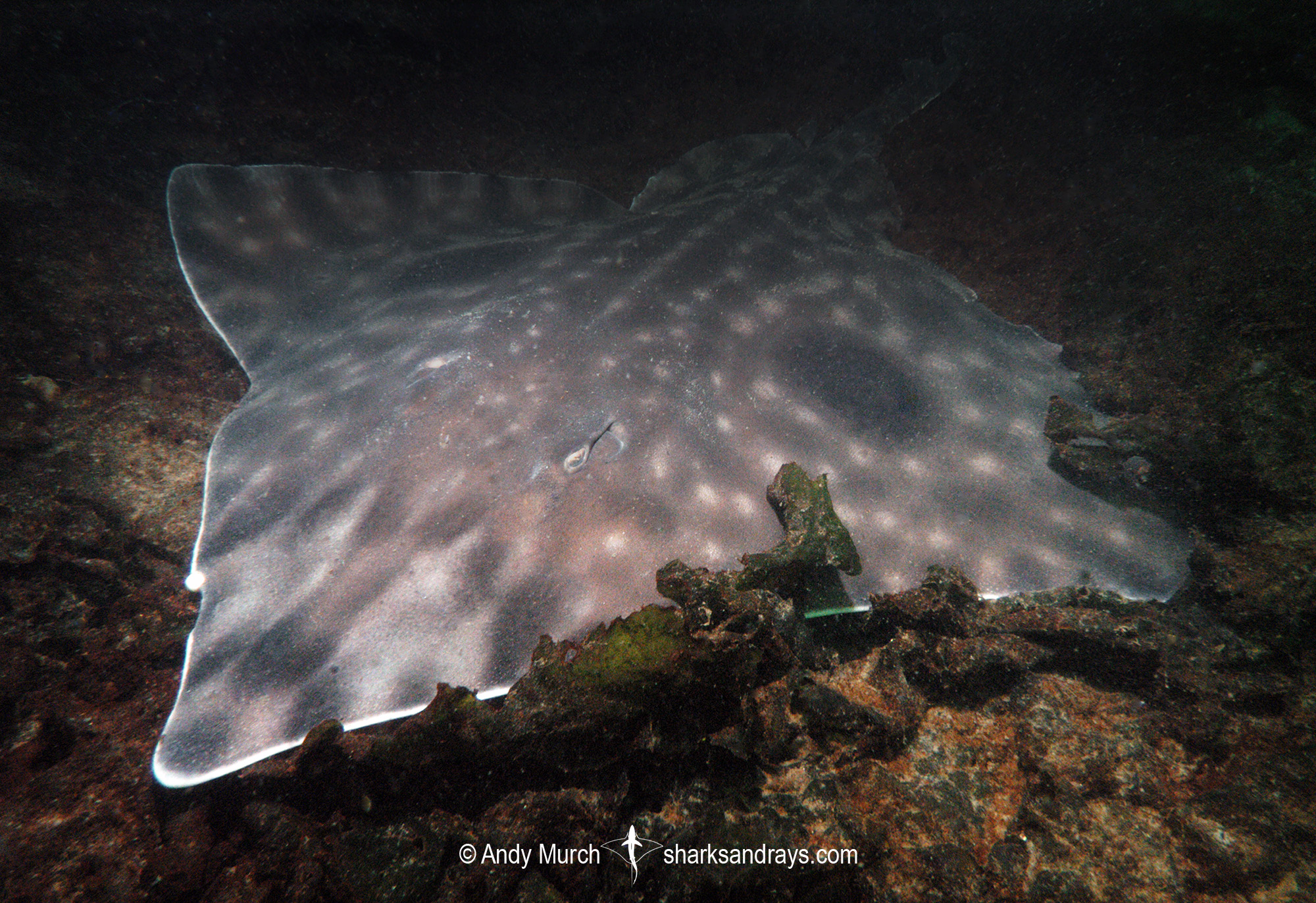Common name(s)
Longnose Skate.
Binomial name
Caliraja rhina.
Synonyms
Beringraja rhina.
Identification
A large skate with a wide kite-shaped disc. Disc width 1.2 x disc length. Snout very long and acutely pointed. Snout length 4-6 x orbit length. Eyes small. Anterior margins of pectoral fins broadly concave with a convex area at head level. Pectoral apices angular or narrowly rounded. Disc granular. Thorns on disc present around eyes, and nuchal and alar regions of adult males. Ventrum rough anteriorly. Pelvic fins strongly notched. Anterior pelvic lobe almost as long as posterior lobe. Tail short, slender, and depressed with broad lateral folds near tip. Tail thorns occur in multiple staggered rows. Tail length 0.65-0.81 x precloacal length. Dorsal fins broadly rounded and well separated. Caudal fin reduced to a low fold.
Colour
Dorsum usually reddish-brown or greyish-brown sometimes with indistinct darker spots or blotches. One relatively small, distinct blackish eyespot often with a pale centre on each pectoral fin, and one eye-sized white spot posterior to ocelli. Snout occasionally black. Ventrum usually greyish, mottled with dark spots and blotches.
Size
Maximum length 137cm, possibly larger. Length at hatching 12-17cm.
Habitat
Temperate seas. Demersal on sand, mud, and mixed rock and soft bottoms. Found coastally and on the continental shelf and slope. From 9-1294m, but most common between 200-400m.
Distribution
Northeast/North central Pacific. The longnose skate occurs from the southeastern Bering Sea to south of Punta Juanico on the Pacific Coast of Baja, and in the northern reaches of the Sea of Cortez.

Conservation Status
LEAST CONCERN
The Longnose Skate is a targeted species in commercial groundfish trawl and longline fisheries in western Canada. Recent catch data indicates that the species has declined significantly but a lack of long term data makes stock assessment difficult.
In the Gulf of Alaska bottom trawl and longline fishery it is a retained bycatch, whereas in Washinton and Oregon, it is sometimes retained.
California once had a significant skate fishery but skates are no longer targeted. Skate biomass in California is believed to be stable at 60% of un-fished levels.
Occurring deeper in Mexican waters, the longnose skate is rarely caught in Mexican ground fisheries.

Reproduction
Oviparous. Egg cases are deposited in pairs. Each case rarely contains multiple embryos.
Diet
Adult longnose skates mainly consume bony fishes.
Behavior
Often partially or completely buries under sand and silt.
Reaction to divers
Very docile. Remains motionless unless molested or approached from above as this mimics the predatory approach of orcas or large sharks.
Tolerant of divers wafting sand away from their backs if done slowly.
Diving logistics
Longnose skates are rarely encountered by divers but they do occasionally show up in the northern part of their range where they tend to be in shallower water.
I have only seen one longnose skate. The encounter occurred in November in ~35m on a gently sloping sandy area at Deep Cove, near Victoria on Vancouver Island.
I have also seen numerous longnose skate egg cases at ~30m off Port Fidalgo in the Gulf of Alaska but no animals were present during May/June.
What’s new
View our full list of updates
Similar species
Big Skate Distinguishable by proportionately shorter snout and larger ocelli without pale centres.






